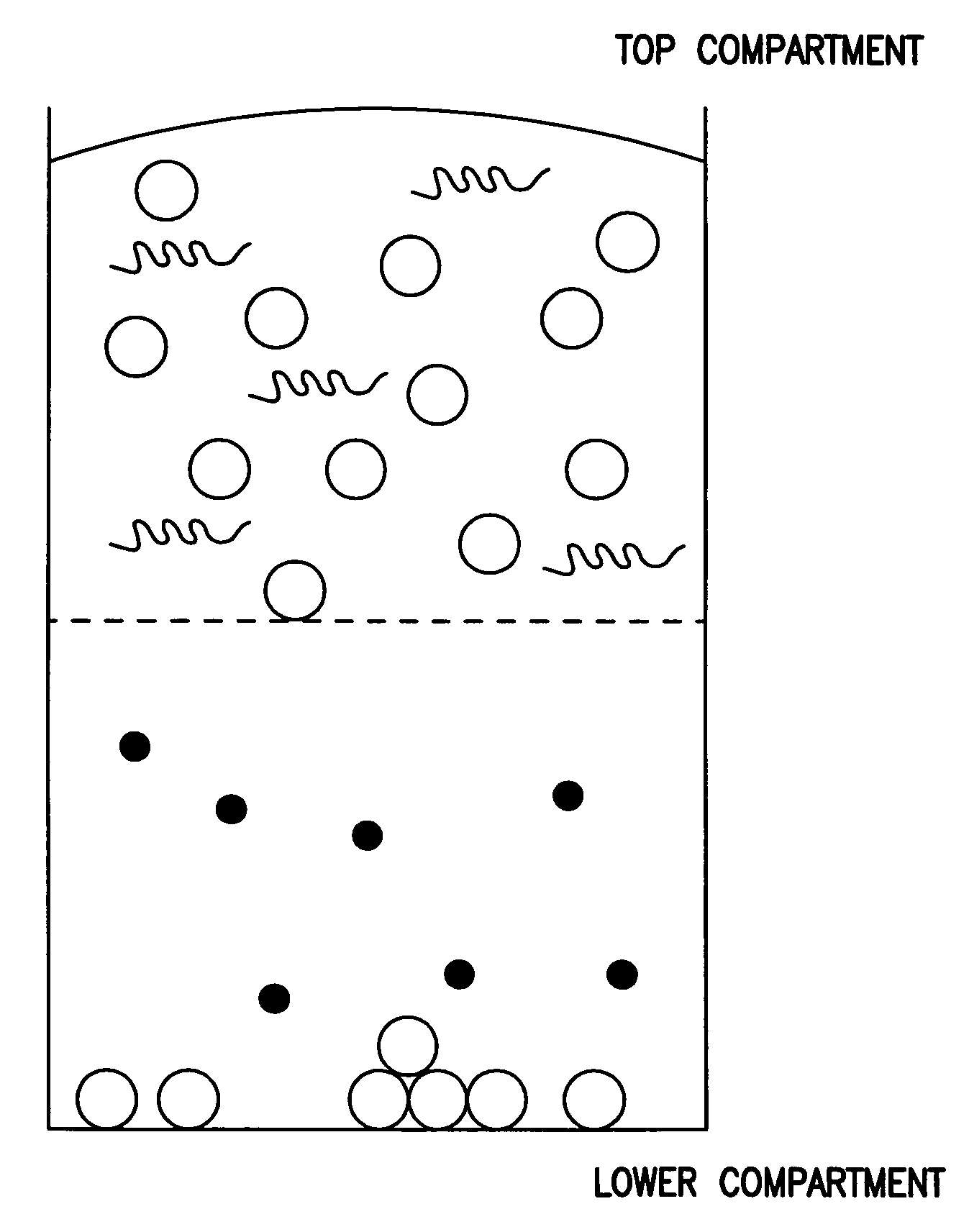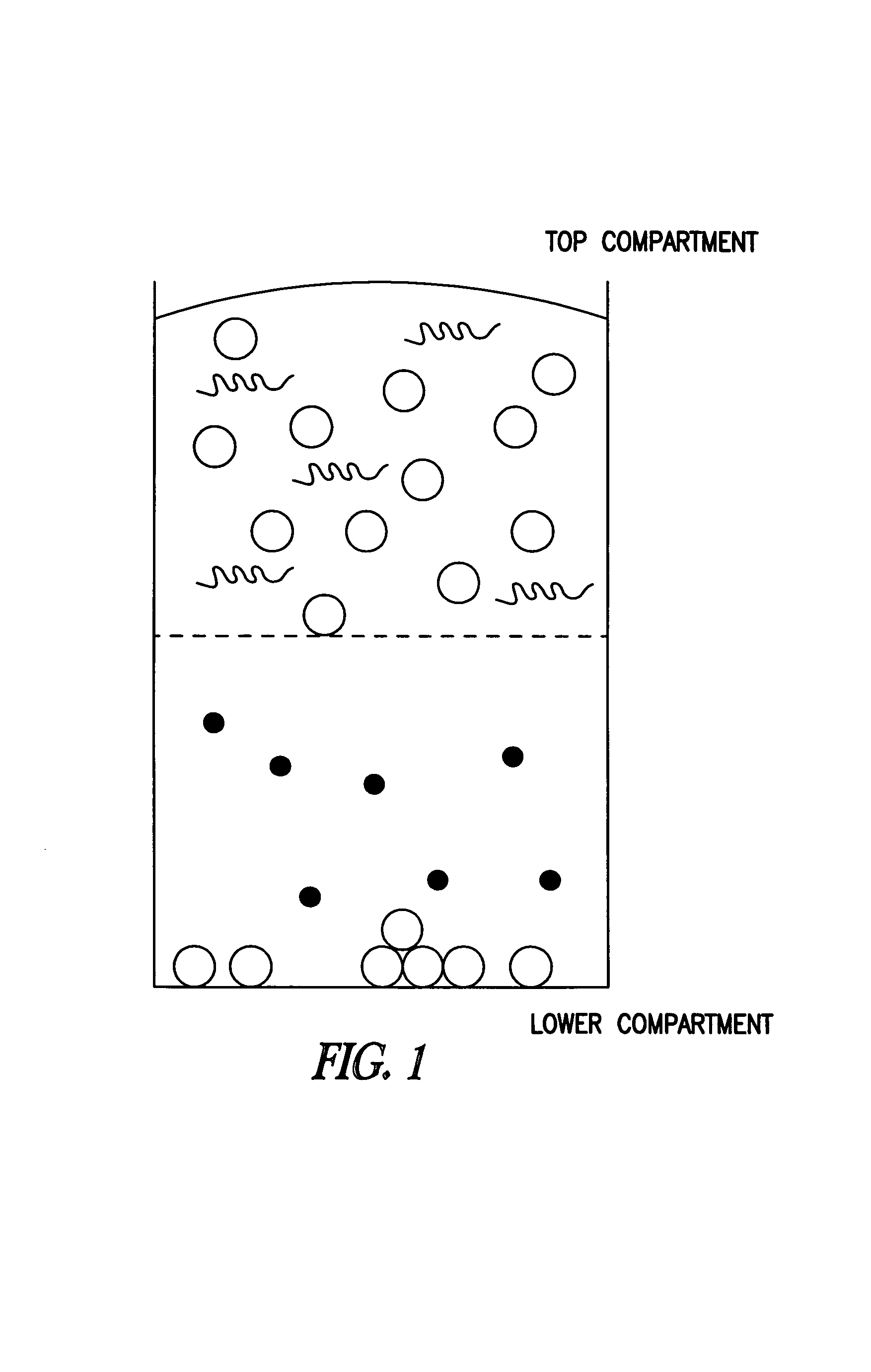Compounds and methods to inhibit or augment an inflammatory response
- Summary
- Abstract
- Description
- Claims
- Application Information
AI Technical Summary
Benefits of technology
Problems solved by technology
Method used
Image
Examples
example 1
Identification and Characterization of Pan-Chemokine Peptide Inhibitors
[0495]Both human and mouse MCP-1 bind to and positively signal through the human chemokine receptor. Thus, regions of homology between human and murine MCP-1 may represent regions that are involved in binding and / or signaling. Based on an alignment of human and murine MCP-1 sequences, three regions in MCP-1 were identified which were conserved between all the species examined. Three peptides (12-15mers) were prepared which had the greatest sequence homology between the human and mouse MCP-1 sequences (Table 1), and were purified to >95% purity. These peptides were screened for their ability to inhibit hMCP-1 induced THP-1 migration. A similar analysis was done for a non-chemokine, i.e., TGF-beta. The sequences of Xenopus laevis TGF-beta1 and TGF-beta3 and human TGF-beta1 and TGF-beta3 were compared, and 3 regions (each 10mer) of perfect homology were identified.
[0496]For this assay, THP-1 cells were maintained at...
example 2
Characterization of Fragments and Variants of Peptide 3(1-12)[MCP-1] and Peptide 2 [MCP-1]
[0507]To determine whether a fragment of peptide 3 has biological activity and selectivity, two 6mer “half-peptides” were analyzed (Table 3): EICADP (SEQ ID NO:8), corresponding to peptide 3(1-6)[MCP-1], and KQKWVQ (SEQ ID NO:9), corresponding to peptide 3(7-12)[MCP-1]. Peptide 3(7-12)[MCP-1] (SEQ ID NO:9) was as potent an inhibitor of CC chemokine signaling as peptide 3(1-12)[MCP-1] (SEQ ID NO:1), but was noticeably more potent as an inhibitor of CXC chemokines (Table 4). In contrast, peptide 3(1-6)[MCP-1] (SEQ ID NO:8) was much less potent as an inhibitor than peptide 3(1-12)[MCP-1] (SEQ ID NO:1).
[0508]
TABLE 3NAMESEQUENCESOURCEPeptide 1 familyPep 1AQPDAINAPVTCCResidues 1-13 of mature(SEQ ID NO:2)hMCP-1Peptide 2 familyPep2(1-15)[MCP1]SYRRITSSKCPKEAVResidues 28-42 of mature(SEQ ID NO:3)hMCP-1Pep2(1-15)[SDF1]HLKILNTPNCALQIVResidues 26-40 of mature(SEQ ID NO:4)hSDF-1βPep2(1-14)[MIP1α]DYFETSSQCSKP...
example 3
Identification, Preparation and Characterization of Therapeutic Agents of the Invention for In Vivo Use
A. Derivatives
[0519]Peptides are generally susceptible to chemical or enzymatic hydrolysis. In particular, peptides are not normally bioavailable by the oral route since they are not stable in the acid and proteolytic environment of the stomach. Thus, chemical or enzymatic hydrolysis leads to a very short in vivo half-life for peptides. To extend the half-life of agents susceptible to hydrolysis, in vitro active agents are modified in a manner that results in a derivative which may be orally bioavailable, have improved pharmacokinetics, and the administration of which may achieve concentrations in blood that inhibit chemokine activity. For example, cyclic-reverse-D (CRD) peptides may be prepared. CRD peptides are prepared by synthesizing the reverse sequence of the peptide (C-terminal to N-terminal) using the opposite stereoisomer (D-amino acids in place of L amino acids). The resu...
PUM
| Property | Measurement | Unit |
|---|---|---|
| Electrical conductance | aaaaa | aaaaa |
| Volume | aaaaa | aaaaa |
| Volume | aaaaa | aaaaa |
Abstract
Description
Claims
Application Information
 Login to View More
Login to View More - R&D
- Intellectual Property
- Life Sciences
- Materials
- Tech Scout
- Unparalleled Data Quality
- Higher Quality Content
- 60% Fewer Hallucinations
Browse by: Latest US Patents, China's latest patents, Technical Efficacy Thesaurus, Application Domain, Technology Topic, Popular Technical Reports.
© 2025 PatSnap. All rights reserved.Legal|Privacy policy|Modern Slavery Act Transparency Statement|Sitemap|About US| Contact US: help@patsnap.com



